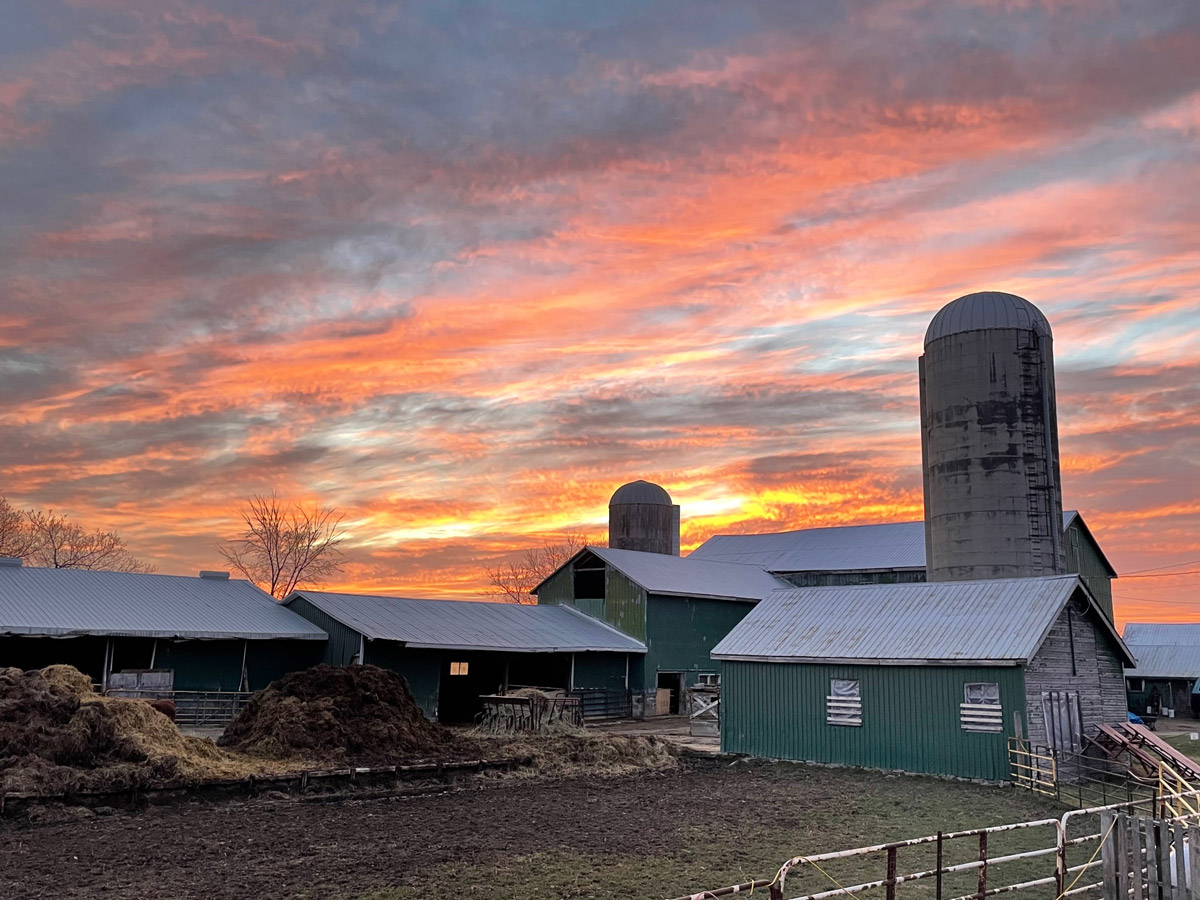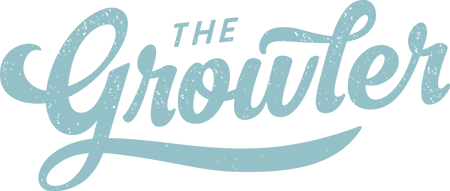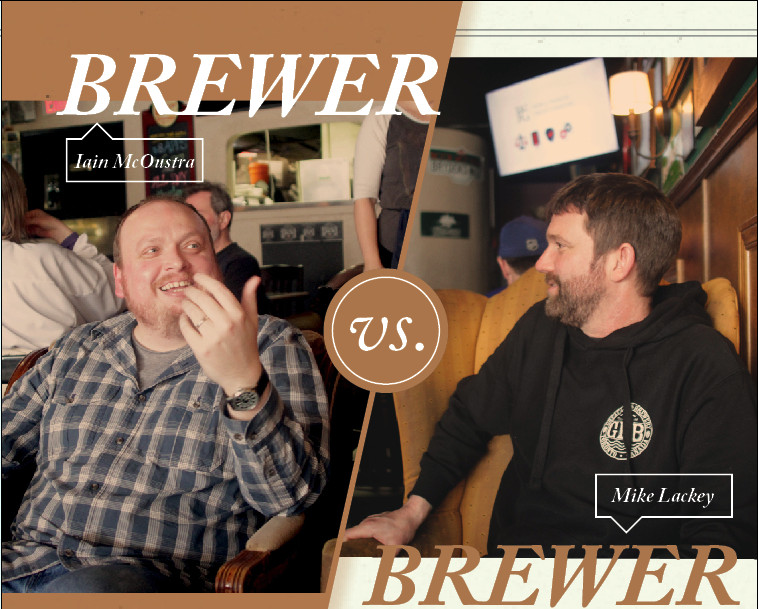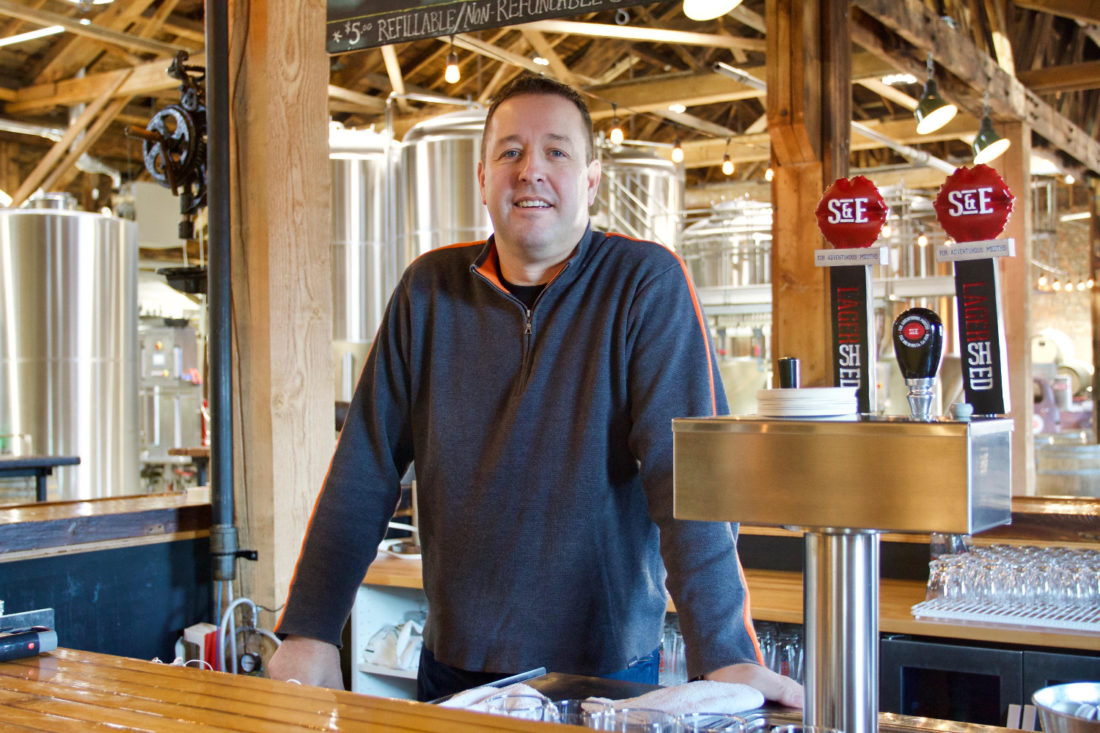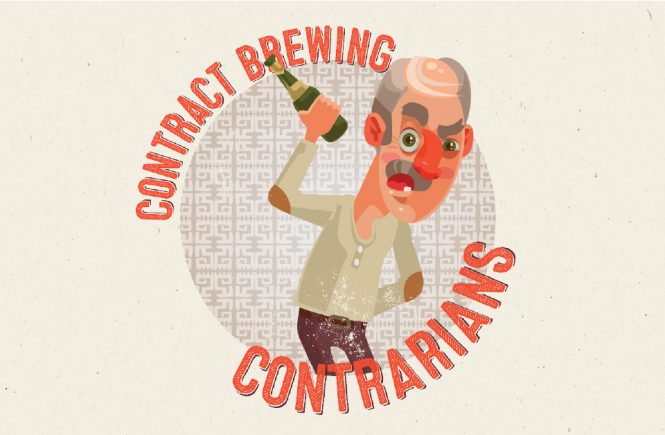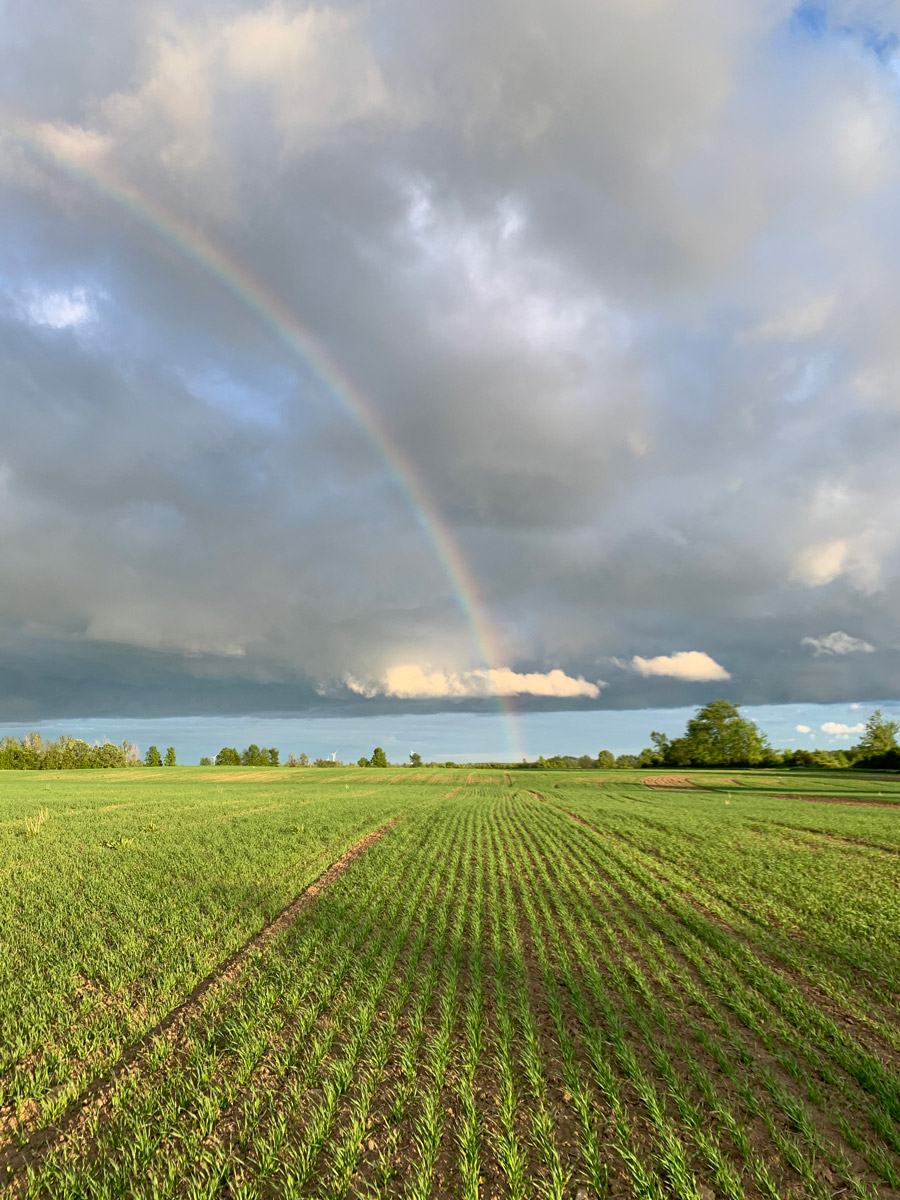
Badlands Brewing and Mackinnon Brothers Brewing are, in some ways, extremely similar. In other ways their approach to brewing is dictated by heritage, geography, and terroir. These factors contribute as much to the character of each brewery as the team behind them. Imagine the amount of work that needs to happen in order to make a brewery work. Now imagine how much work goes into operating a farm. Now combine the two.
Badlands Brewing’s Troy Baxter spent much of the interview doing dry hop agitation in Badlands’ newly expanded fermentation cellar, and estimated his weekly workload at 100 hours. Located in Cheltenham, Ontario the property that houses the brewery has been a farm since 1867, and it has been in the family since the 1940’s. Currently Badlands is four generations strong, and although it was originally a dairy farm, changes are underway.
Mackinnon Brothers Brewing’s Ivan Mackinnon spent the interview doing payroll; “Dry as a bone, but it must be done or people won’t work.” Mackinnon’s brewery has also recently expanded, and they’re coming out of their busiest month on record. In Bath, Ontario, Mackinnon’s family has been on the land since 1784, and the family is currently on its ninth generation, having been seed farmers for the last several decades.
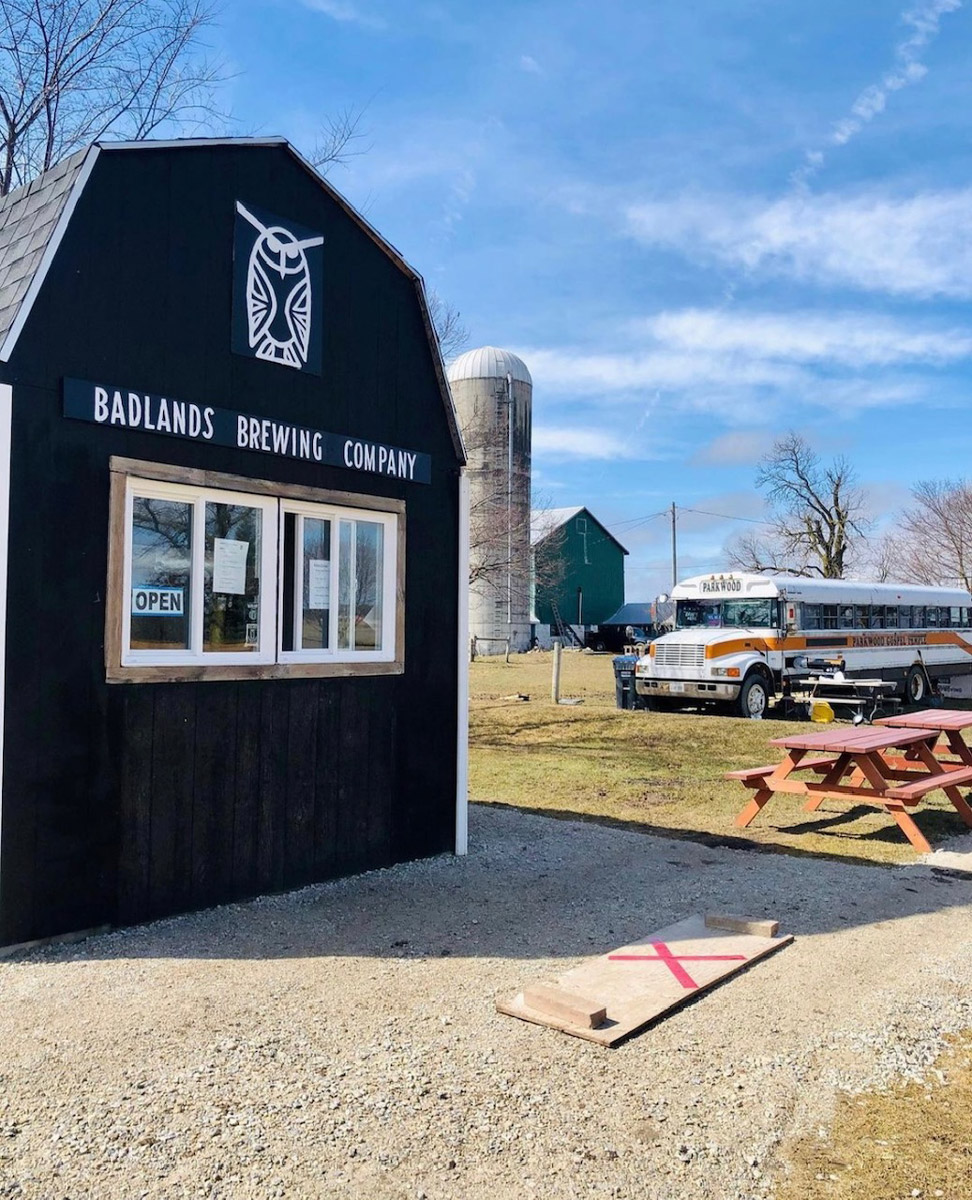
Growler: What made you decide to go into brewing?
Troy Baxter: For me it was almost a culinary perspective when we got into it. We worked for a restaurant for quite a while as kids, so for me at least it was a natural extension at that point to start brewing. I liked making things from scratch and the first thing was wine in university… after that I got into brewing beer, mostly as a result of drinking Hill Farmstead and wanting that here, but not being able to find it back in 2014.
Ivan MacKinnon: The reason to come back to the farm and start the brewery, my grandparents were really well steeped in the history of the family so we both wanted to come back to the farm and continue that tradition, but the economics of farming were such that 1300 acres… we would have had to get really, really big for the farm to support three families instead of one. So we decided the brewery would be a good way to be on the farm and diversify and continue to add value to what we grow on the farm.
Growler: Where did you learn to brew and how does that impact the styles that you’re brewing in?
Baxter: I taught myself, to be honest. Hill Farmstead was the one I point to most often as the biggest inspiration. I like to joke that Shaun Hill ruined my life by making such delicious beer… I started home brewing at Toronto Brewing and got a two gallon bucket, a three gallon pot, and built a little igloo mash tun and basically for a hundred bucks I was able to start brewing at home. The first few batches were really bad, but reading and teaching myself different things, after 20 batches the beer started to taste more like I wanted. We started a one barrel brewery, which I would not recommend to anyone if you want to make money. Basically a glorified homebrew setup, but it was more of a proofing process. We didn’t have any money so we started that one for as cheap as we could.
Mackinnon: Daniel came back (from Heriot-Watt) with the mentality of wanting to brew traditional ales and lagers, probably driven by that education in Scotland and partly just because that was what we like to drink. It’s opened us up to a much wider audience locally than if we were specializing in barrel aged sours.
Growler: What crops did you have on the farm prior to making the leap?
Baxter: Mostly cash crops. It used to be a dairy farm, quite a while ago. We have about 20 beef cows at any given time. The barnyard is right against the beer garden, so you can actually see cows. We also grow a variety of cash crops. Wheat, soy, obviously we grow hay for the cows.
Mackinnon: We grew corn, soybeans, wheat, oats, and barley already. We were doing malting barley before we had our license to brew beer.
Growler: Barley isn’t just barley. What strain of barley are you planting?
Baxter: We are very much still in the GTA. To put it in perspective we all used to work in Toronto, and we still get well above sensible temperatures for growing barley in the summer. It’s not something we can grow successfully here. The protein content gets out of whack, and you probably get it blooming in the field. We’re keeping our eyes open for varieties that are doing well in similar climates. At the moment we’re growing no barley successfully. I don’t think any maltster would want to malt it.
Mackinnon: There’s just malting varieties that are known. When we first started, we somewhat illicitly imported some European 2-Row, a variety that was grown all the way across the continent, fought with it for three years; it went horribly. It was not well suited to this area. We then grew two western Canadian varieties, AC Metcalfe and Newdale. They were also not well adapted, but we at least got up and running.
Esma, which we grew for the first time three years ago (2019) went really, really well, so much better adapted to our neck of the woods. Devin Huffman at Barn Owl really liked it. The European varieties are more geared towards all grain brewing with an enzyme package that goes along with that. From an agronomic standpoint it was much better for us. We also grew for the first time last year a winter barley variety called Calypso, driven mostly by changes in the climate. We’re getting late spring, early summer really hot and really dry.
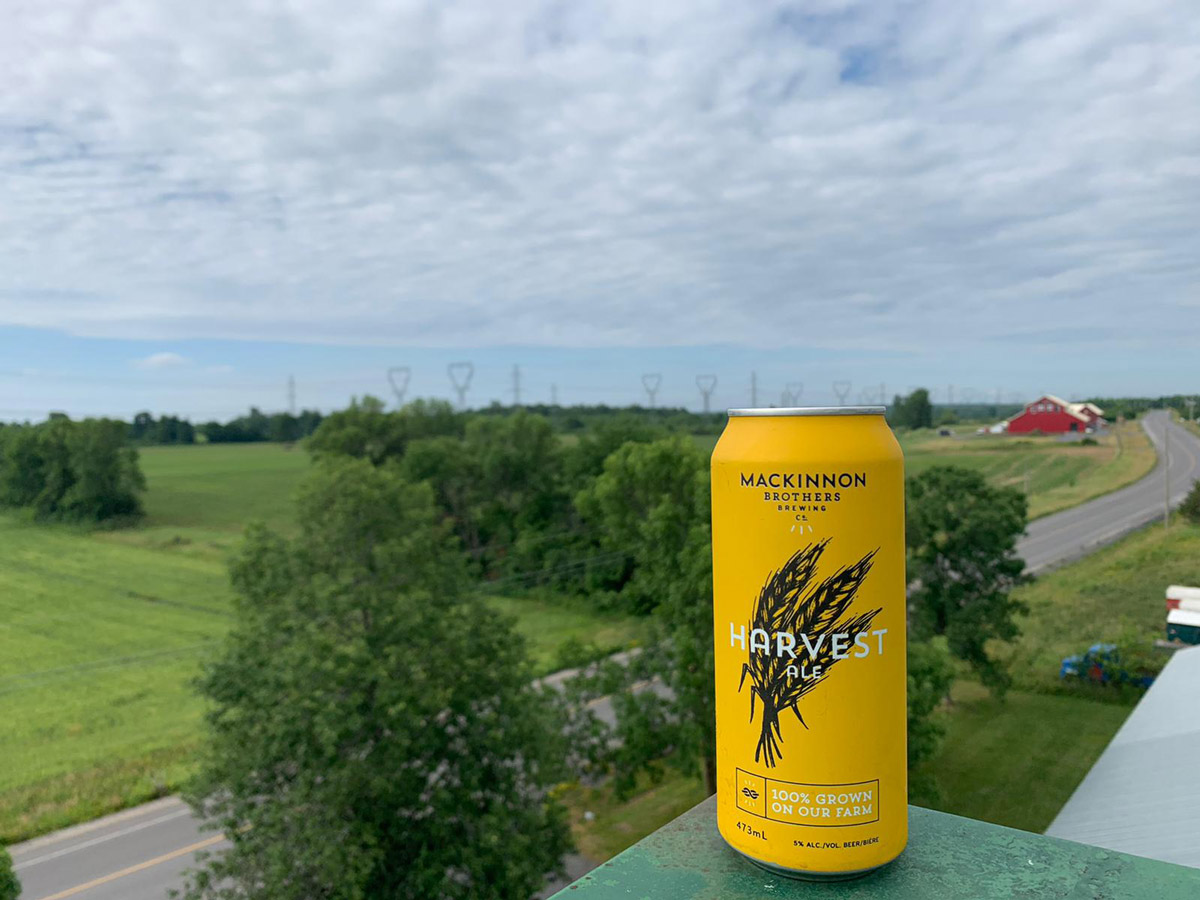
Photo courtesy of MacKinnon Brothers Brewing Co.
Growler: What hops varieties do you have growing on your farm and what kind of acreage have you planted?
Baxter: We’re planning on expanding in the next couple years. We’ve got 60-ish bines in the ground split between four varieties: Cascade, Centennial, Chinook, and Columbus. We’d like to build out to a 2-3 acre hop yard split between a few varieties so that you have something to experience while you’re here.
Mackinnon: When we started, we grew Spalter, Newport, Mackinac. The Mackinac was the only one that really ever thrived. We have two yards now. One three quarters of an acre yard at the edge of the brewery yard. Then we have about three acres worth of hops on a field a kilometer up the road from us. It’s up high on the top of a hill, so there is nice natural airflow that gets rid of mildews. All of our hops go in the Harvest Ale, which is a lightly hopped beer; one of seven we’re making right now.
Growler: Is there an on farm brewery philosophy or ethos?
Baxter: As a homebrewer I was always attracted to the idea of grain to glass on a single plot of land, or at least attracted to the romantic idea. We started looking into that concept and it takes a lot to do that and there are some factors that work against you. Rather than being able to do that in the short term, we’ve set everything up so we can get there in the long term so that hopefully we can get there in the long term so we can grow our own barley, malt our own barley, brew our own beer, grow and process our own hops, use our own house yeast culture and serve it on site. So, essentially, it’s a plot of land where what we pull from the land gets processed here, served here, and all the sidestream products like spent grain and yeast gets fed to the cows. We’re still pretty far from that honestly, but we’re slowly edging towards doing all of those things.
Mackinnon: We have always brewed beer that we want to drink, and we’re lucky in the fact that we have palates similar to a larger proportion of the population. We brew good quality, not challenging, traditional ales and lagers. That’s what we want to drink and that’s what we think the market wants to drink. I think the other really important thing is that we have always tried to focus as much as possible on the local market. Maybe 50 kilometers from the brewery, to try and own the local market as much as possible. It’s served us well because our story is most relevant to people close to the farm. It’s a local story, so it only makes sense to focus on the local market as much as possible. We learned really early that people want to support a local business where they can relate to the people running it.
